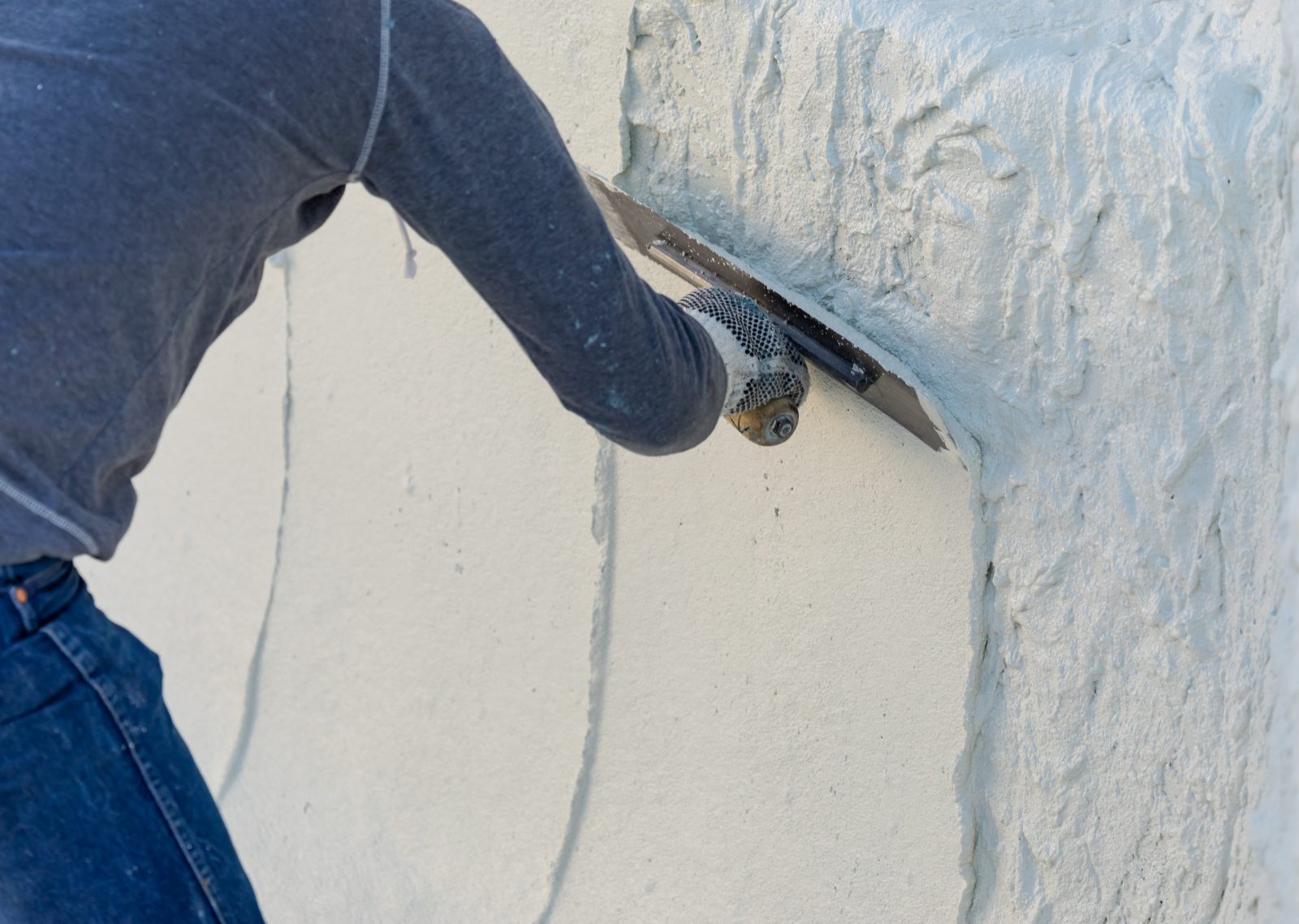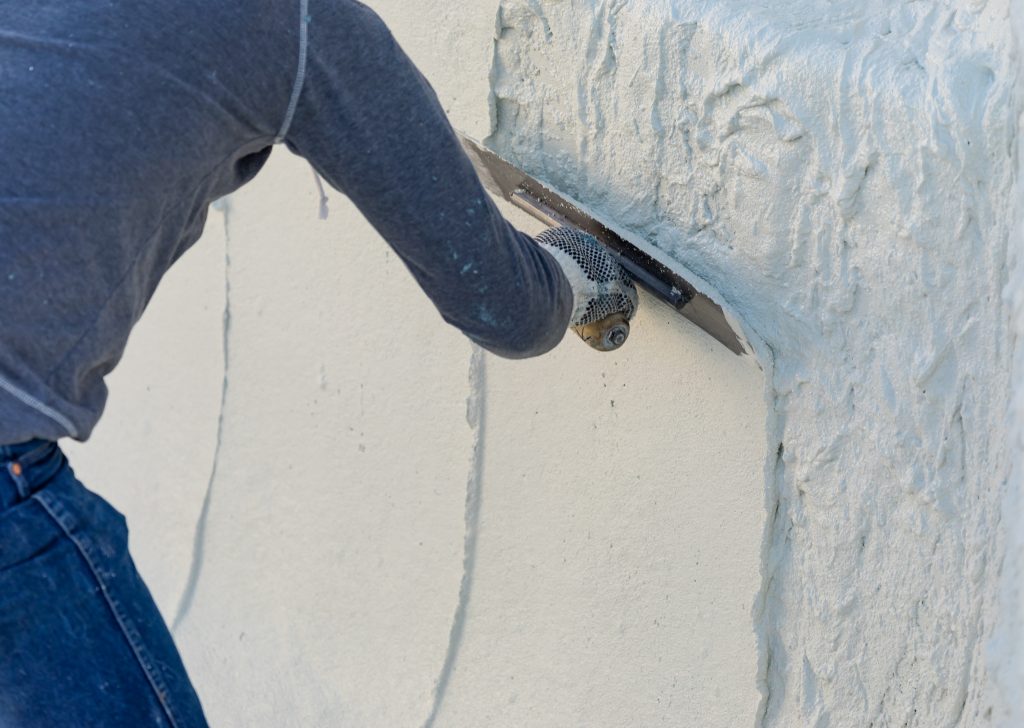Perfecting Substrates (the importance of bonding agents)


Concrete bonding agents play a crucial role in ensuring a strong and durable bond between shotcrete and plaster in swimming pools. They offer a host of advantages that can work to improve durability of a cementitious finish, while evening out its appearance, explains Jon Temple, who urges builders and plasters to think twice before skipping the bonding agent.
By Jon Temple
In effect, bonding agents work like paint primer. The idea is to create a uniform substrate upon which you place the finish, be it plaster, exposed aggregate or polished aggregate. Minor inconsistencies in shotcrete placement and composition especially around steps, plumbing penetrations, and other areas, can result in an inconsistent finish appearance and performance.
The bonding agent prevents those sometimes-eye-catching visual defects, which is why it’s an important step that shouldn’t be skipped as part of the surface-preparation and plaster-installation process.
Concrete bonding agents serve as an intermediary layer that enhances adhesion between the two materials, shotcrete and plaster, promoting a more robust and long-lasting bond. Here’s why these agents are important in this context:
Adhesion Enhancement
As the term directly implies, bonding agents contain additives that create a strong bond by penetrating the pores of the shotcrete and providing a surface to which the plaster can tightly adhere.
Preventing Delamination
Bonding agents help prevent delamination by promoting a cohesive bond between the two materials. Without a bonding agent, there’s a risk of delamination, where the plaster layer may separate from the underlying shotcrete. This can lead to cracks, water leakage, and a shortened lifespan of the pool finish.
Improved Durability
The use of bonding agents contributes to the overall durability of the pool surface. A strong bond helps ensure that the plaster finish remains intact, even under the stress of shifting water chemistry conditions, temperature fluctuations, and exposure to normal wear and tear.
Reduced Water Penetration
Although not a waterproofing measure, per se, some bonding agents do act as a barrier, reducing water penetration through the pool surface. This is crucial for preventing water from seeping into the shotcrete, which can lead to deterioration and structural issues over time.
KEY INGREDIENTS
Bonding agents typically contain a variety of chemical components that contribute to their effectiveness. The specific chemistry may vary among different products, but common components include:
Polymer Resins: These are often acrylic or latex-based and contribute to the flexibility and adhesion of the bonding agent.
Cementitious Binders: These binders help create a chemical bond between the bonding agent and the gunite surface.
Modifiers and Additives: Various additives may be included to enhance specific properties, such as workability, curing time, and adhesion.
Fillers and Aggregates: These components may be added to improve the mechanical properties of the bonding agent.
CONSISTENT APPLICATION
It is my view that manufacturers of bonding agents often get a bad rap as they’re blamed for failures that are due to faulty installation. No matter how good the product, if it’s applied incorrectly, it will fail, meaning delaminate, 50% of the time.
Common missteps including an excessive water in the mix, usually added as the material thickens during application as a way to cover more area. Doing so compromises the strength of the product and will also lead to delamination.
Also, using only a single coat is asking for failure. A single coat will not provide a reliable bond, and it will not prevent impurities within existing shotcrete from leeching into new plaster. We recommend a minimum of three coats.
We always spray-on the bonding agent. When using a roller, it’s easy to inadvertently remove the agent when back-rolling to create texture.
Applying bonding agents is not difficult, but it does add a step to the installation process.
Surface Preparation
Ensure that the substrate (surface to be bonded) is clean, free from dust, dirt, oils, and other contaminants. This may involve pressure washing or mechanical cleaning.
Repair any existing cracks or defects in the substrate.
Bonding Agent Selection
Choose a bonding agent suitable for the specific conditions and materials involved. Common types include latex, acrylic, or epoxy-based bonding agents.
Mixing (if required)
Some bonding agents come pre-mixed, while others may need to be mixed with water or other additives. Follow the manufacturer’s instructions for the correct mixing ratios and procedures.
Liquid Bonding Agent Application
If using a liquid bonding agent, apply it evenly over the cleaned and prepared substrate using a spray gun or a brush.
Ensure complete coverage, but avoid excessive pooling or drips.
Allow Drying or Curing
Follow the manufacturer’s recommendations for the drying or curing time of the bonding agent. This is crucial to ensure that the bonding agent creates a proper bond with the substrate.
Always follow the specific guidelines provided by the bonding agent and shotcrete manufacturers. Additionally, adhere to safety precautions during the application process. Consulting with a structural engineer or construction professional for project-specific advice is a good idea if you’re unsure.
Installed correctly, the result is a cohesive layer that ensures the gunite and plaster work together effectively, providing a resilient and long-lasting pool finish.
Jon Temple is president and founder of Tempool, a pool-surfacing firm located in Jacksonville, FL. Temple founded the company in 1996, which has plastered more than 30,000 pools. He is a valued Watershape University faculty member.










